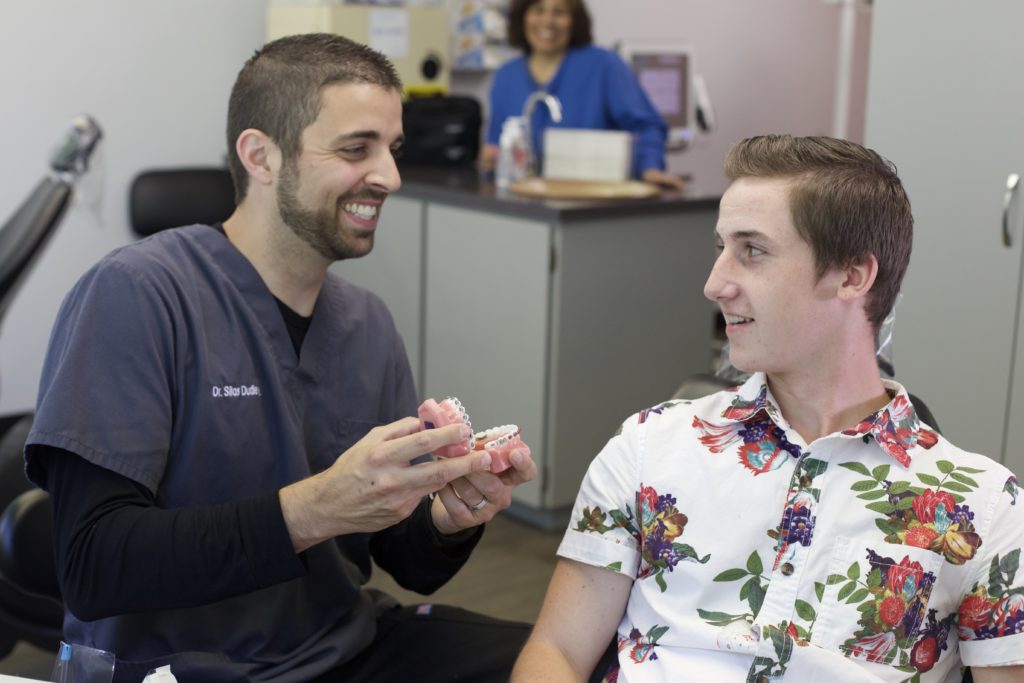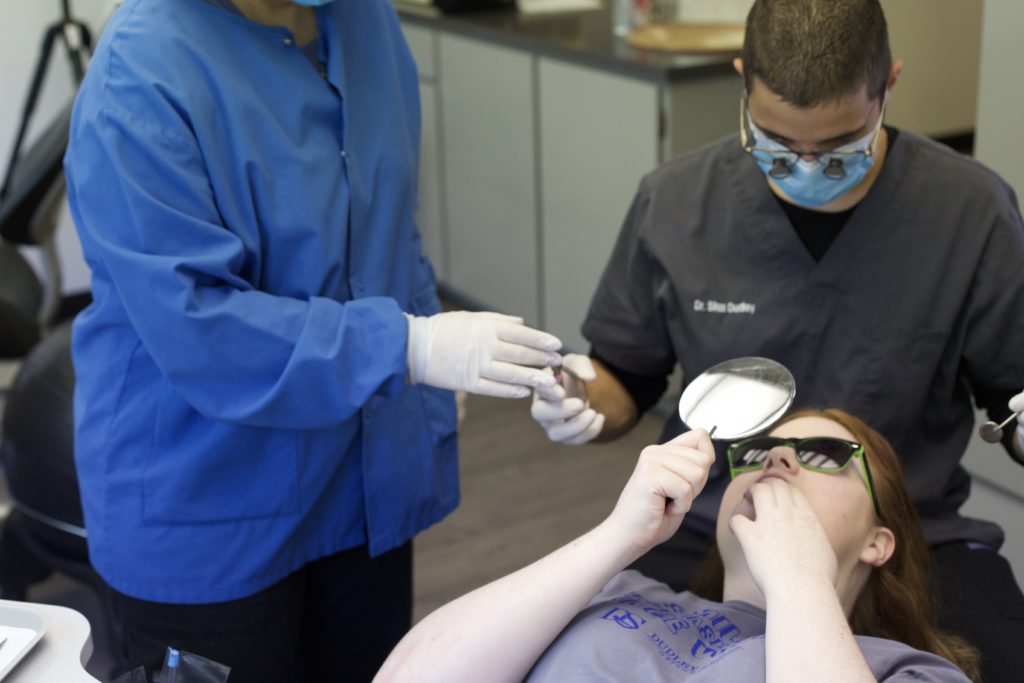How to Survive Halloween With Braces
October 18, 2018

As an orthodontic patient, you play an essential role in the success of your treatment. In fact, any journey towards a straight smile should be a team effort that includes you, your orthodontic team, and your general dentist. At Dudley Smiles, that concept is important to us! By working together, we can give you a beautiful smile and improved health at the end of the treatment process, but this depends in part on you following our recommendations. One of the most important things you can do to ensure you receive the best results is to maintain a good oral hygiene routine. This is a key component of braces care, and even though it may take a little extra time and effort, it will be more than worth it once we reveal your beautiful new smile! Let’s take a closer look at the best ways to keep your teeth and gums clean, healthy, and free from bacteria while you’re in braces.
Avoiding plaque
Plaque is a sticky, colorless film that is made up of bacteria, food, and saliva. If you aren’t careful to brush, floss, and rinse thoroughly, it can easily collect on your teeth and around your braces. Over time, this can lead to a number of issues.
Increased risk for cavities and decalcification
Plaque contains a bacteria that can react with the sugars and starches in food, eventually forming an acid that eats away at the enamel on your teeth. This can cause cavities, leave white marks on the teeth, and even lead to gum disease. When plaque is allowed to accumulate around your braces, it can leave stains on your teeth we refer to as decalcification. Unfortunately, the lines and spots that come from decalcification are permanent, so prevention really is key in this case!
Periodontal disease
Periodontal disease is more commonly referred to as gum disease. This is caused by a buildup of plaque on the teeth, and generally occurs in three distinct stages.
The first stage is gingivitis, which occurs in response to an accumulation of plaque irritating the gums. In response, they may be puffy, swollen, or bleed slightly when you brush or floss.
If gingivitis is left untreated, the plaque can then harden into a substance called tartar. When tartar accumulates, gaps or pockets may form between your gums and teeth. This allows even more tartar to collect in the pockets, exacerbating the problem. This second stage of periodontal disease is known as periodontitis.
If periodontitis is left untreated for too long, pockets of bacteria can form and go deeper beneath the gums, attacking and eventually destroying the bone that holds your teeth in place. This state of advanced periodontitis can cause even healthy teeth to loosen or fall out, and is the third stage of gum disease. It’s also the most serious.
With professional help from an experienced general dentist, and vigilant follow-up care at home, the early stages of gum disease are often reversible. This is one set of symptoms you don’t want to ignore, however. Because gum disease is usually painless, especially in the beginning, you will need to be on the lookout for any signs of it while undergoing orthodontic treatment. That includes bleeding, swollen, or puffy gums. By carefully following Dr. Dudley’s directions on how to care for your braces, you’ll be able to get a great headstart on keeping plaque, bacteria, and tooth decay away.

The best dental hygiene routine for braces patients
Problems caused by improper dental hygiene can be frustrating enough to deal with on their own, but it doesn’t stop there. Secondary oral health issues can also crop up when plaque and bacteria are allowed to gain a foothold. This can extend the total time spent in braces, and in more serious cases, braces may even need to be removed while we wait for any mouth and gum issues to be resolved before picking treatment back up.
Being in braces often means adjusting both the way you brush your teeth and how often you do it. We recommend brushing your teeth with a soft-bristled toothbrush after every meal (and preferably after every snack) for at least two minutes each time. This keeps food particles and plaque from gaining any ground in your braces and teeth. To properly clean the brackets, you should angle the brush head against them, and be sure to brush thoroughly underneath the wires, too.
Flossing is a skill that can be tricky to master at the best of times, but it tends to have an even bigger learning curve when you’re wearing braces. But it’s very important for you to floss every night, because even if it seems like all food particles have been brushed away, braces can trap them in places that are hard for you to see and reach. To correctly floss with braces, try the following:
Although this can be time-consuming in the beginning, be patient. The more you practice, the faster you’ll be! You can also look into the products available that have been designed to make this an easier process for braces patients. “Threader floss” has a stiff end that permits flossing between brackets, while a steady orthopick easily slides between the teeth and the bracket wire, removing debris and keeping your teeth clear of bacteria. Electric toothbrushes and oral irrigators give you more power and better reach. All of these tools can work together to make dental hygiene much easier and much more efficient while you’re working on straightening your smile.

Keep your braces sparkling clean with Dudley Smiles
Beginning an orthodontic journey with braces can be really exciting, but comes with its own set of challenges, too. While you’ll likely have to make a few adjustments as you go, caring for your braces will be just another part of your daily routine before you know it! Our talented team is committed to making the process as stress-free and positive as possible, so get in touch with us any time you have questions or concerns about the treatment process, or if you want to know more about caring for your braces. Your satisfaction with the experience is as important to us as creating a beautiful, healthy smile for you!